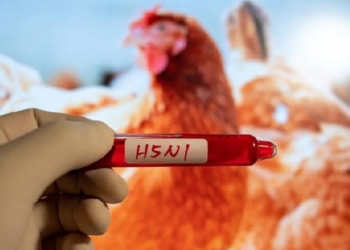London: The fresh wave of Covid-19 cases worldwide majorly driven by the highly transmissible JN.1 variant may not be attributed to its immune escape ability, claims a study by a team of international researchers.
The JN.1 variant, classified as a variant of interest (VOI) by the World Health Organization (WHO) due to its rapid spread, is currently present in more than 41 countries, including India.
It was first detected in Luxembourg in August. JN.1, from the lineage of Omicron, is an off spin of BA.2.86, but has an additional mutation (L455S) in the spike protein.
The L455S mutation is believed to have provided the variant with immune-evasion properties.
“Based on the present data and other studies, it seems unlikely that neutralisation escape is the facilitating principle behind the present increase in JN.1 incidence as opposed to earlier strains,” said scientists from Charite- Universitatsmedizin Berlin, Germany, Universite Paris Cite, France and University of Cambridge in the UK.
“If so, we would have expected strong reductions in neutralisation activity, such as the decrease between BA.5 and XBB.1.5 that is deemed responsible for the upsurge of cases over winter 2022/23 in North America,” they said, adding that “changes other than neutralisation escape may affect viral fitness and deserve further study”.
For the study, published in the journal Eurosurveillance, the team examined serum samples from 39 vaccinated and SARS-CoV-2-exposed healthy individuals.
The team assessed virus neutralisation titers in these samples against seven different viral variants, including B.1, BA.2, BA.5, XBB.1.5, EG.5.1, BA.2.86 and JN.1.
They found the highest neutralising reactivity against the ancestral B.1 variants, followed by BA.2 and BA.5 variants.
This is because of the pre-existing anti-SARS-CoV-2 immunity induced by Covid-19 vaccination or previous SARS-CoV-2 infection.
While the XBB.1.5 and EG.5.1 variants showed around 15-fold reduction in neutralisation, Compared to the B.1 variant, the team found no detectable neutralising reactivity against these variants in 12 of the 39 participants.
The BA.2.86 variant showed a 20-fold reduction in neutralising titers compared to the ancestral B.1 variant.
No neutralising titers were detected in 11 out of 39 participants. Further, in comparison to the BA.2.86 variant, the JN.1 variant showed no further reduction in neutralising titers.
Importantly, the team found similar immune escape ability for both BA.2.86 and JN.1 variants. Both showed a significantly higher ability to escape pre-existing anti-SARS-CoV-2 immunity compared to earlier variants.
This could explain the recent predominance of BA.2.86 and JN.1 variants, the researchers said.
(IANS)













